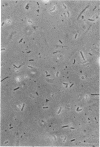Abstract
Steady-state growth rates of thermophilic algae can be determined directly in nature in the flowing waters of a hot spring channel by measuring the rate of loss of algal cells when the channel is darkened. The half time of the loss rate in the steady state is identical to the generation time. We studied the unicellular blue-green alga Synechococcus in Yellowstone National Park. Temperature and flow rate remained relatively constant throughout the experiment. Quantitative cores were taken and homogenized; the algal cells were then counted by use of a Petroff-Hausser counting chamber. After ascertaining that the algal population was in a steady state, the channel was darkened in such a way that neither flow rate nor temperature was altered. The population began to decrease within 1 day; the loss rate was exponential with time for 2 to 3 decades. Half times were then calculated from these loss rates. The growth rates found were considerably lower than those for the same organism in laboratory culture. The results suggest that in nature the organism may be an obligate phototroph. In two cases, after the algal populations decreased to an undetectable level, the dark covers were removed and the rate of recolonization was measured. The kinetics of recolonization were different from the kinetics of washout.
Full text
PDF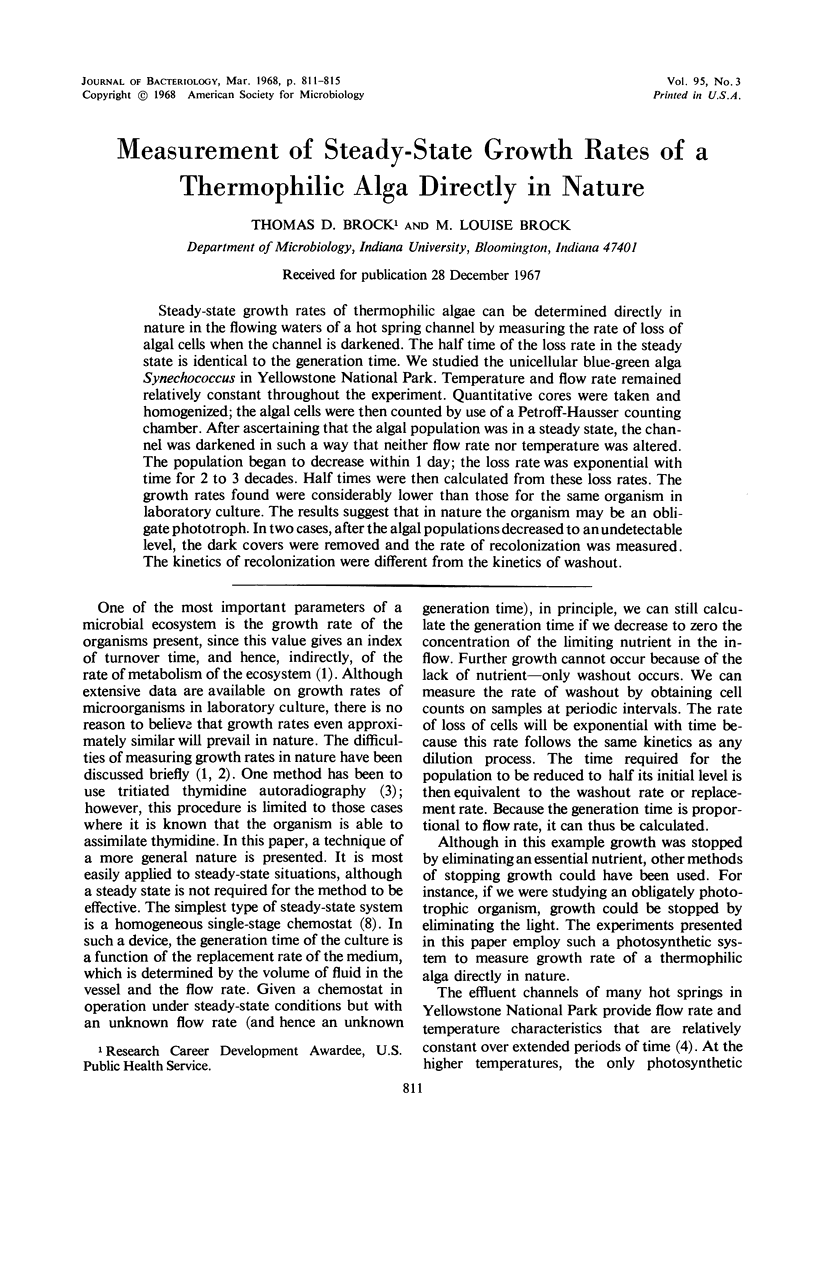
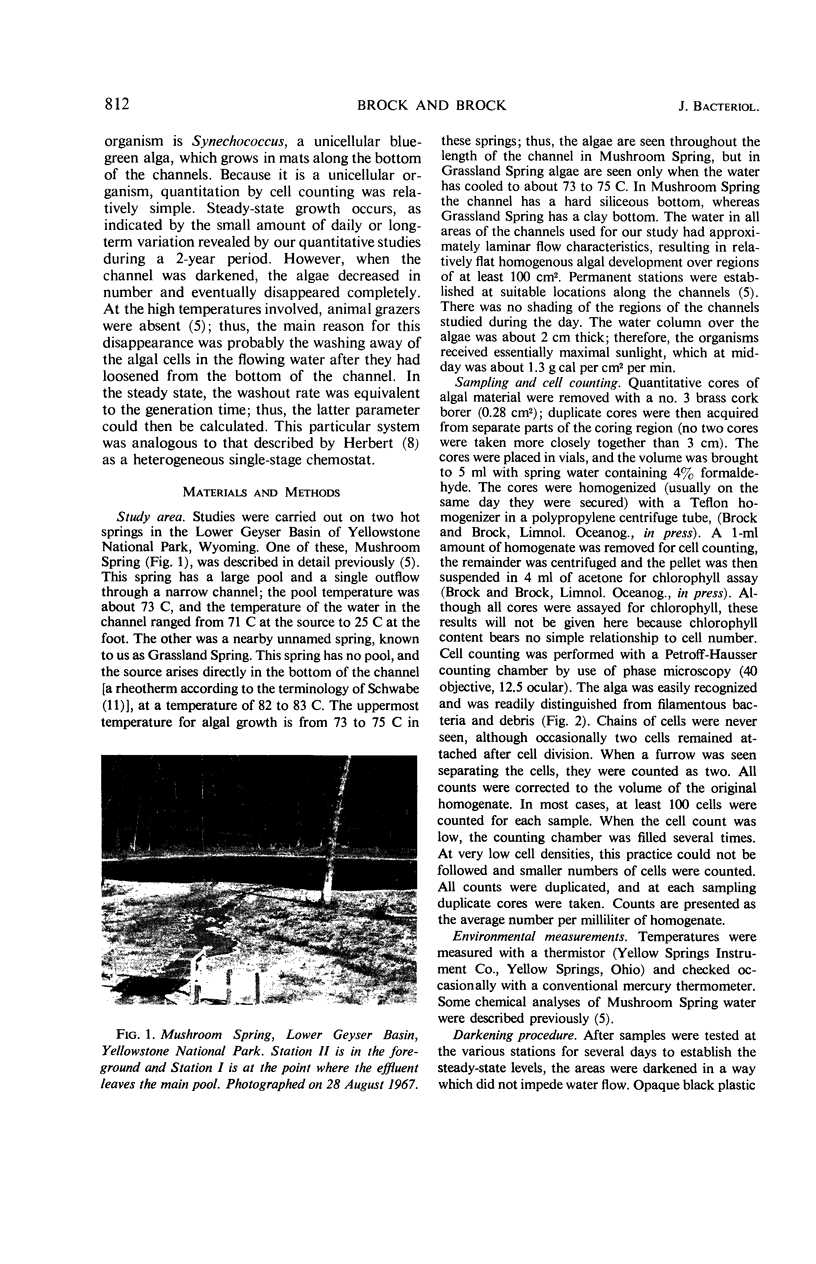
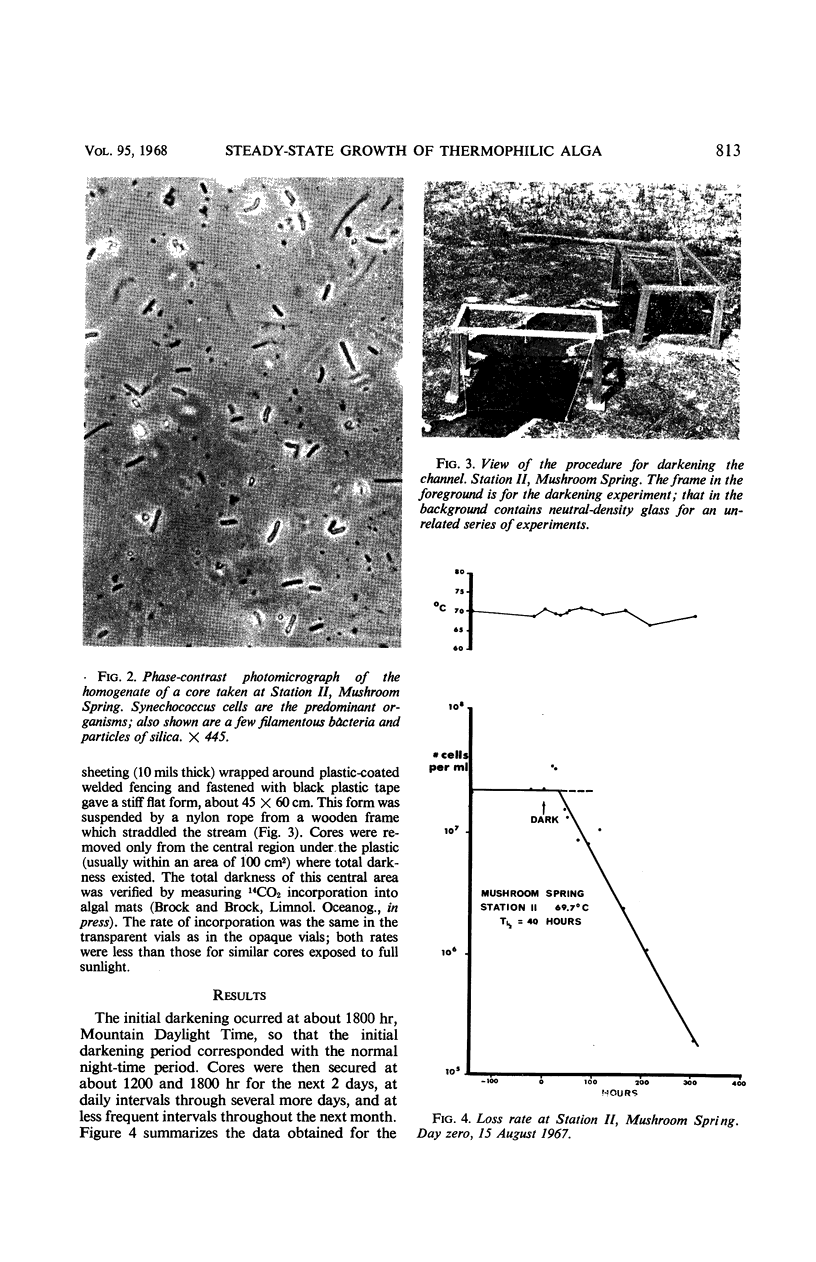
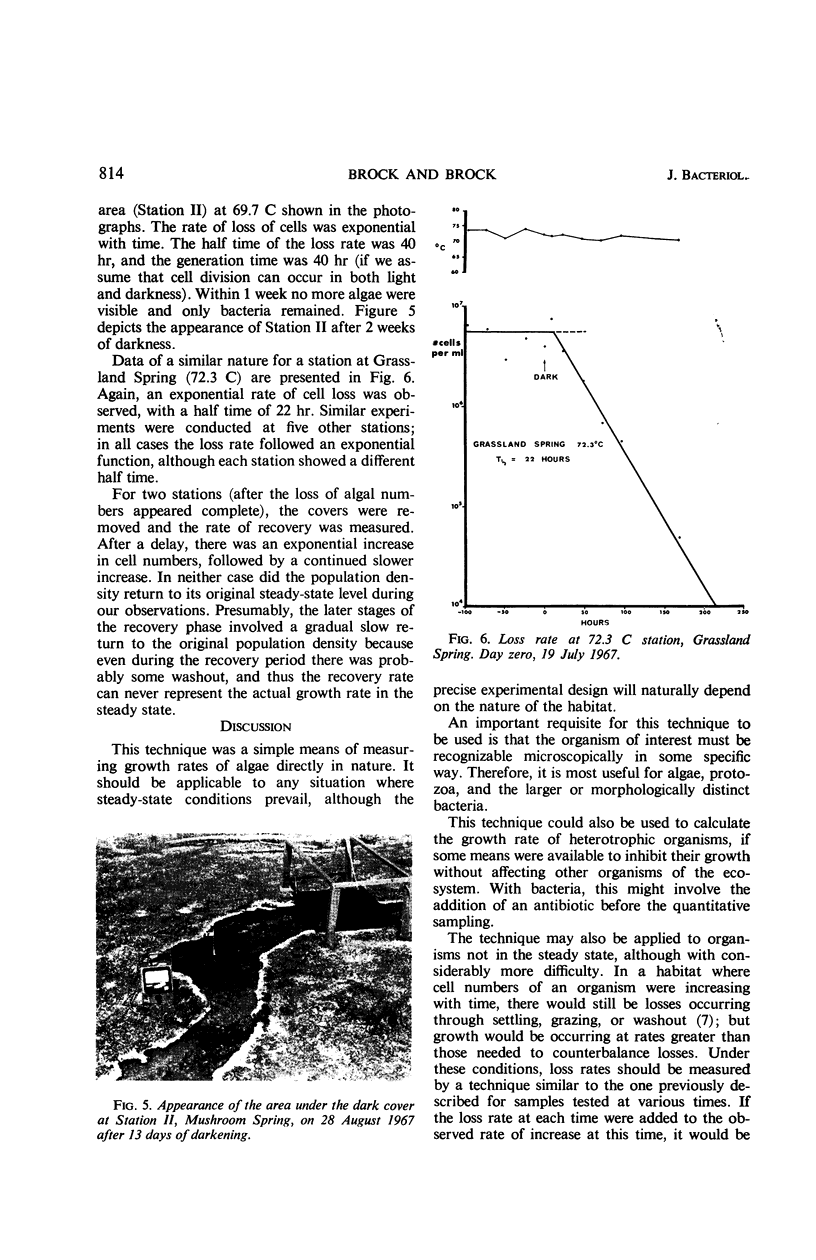
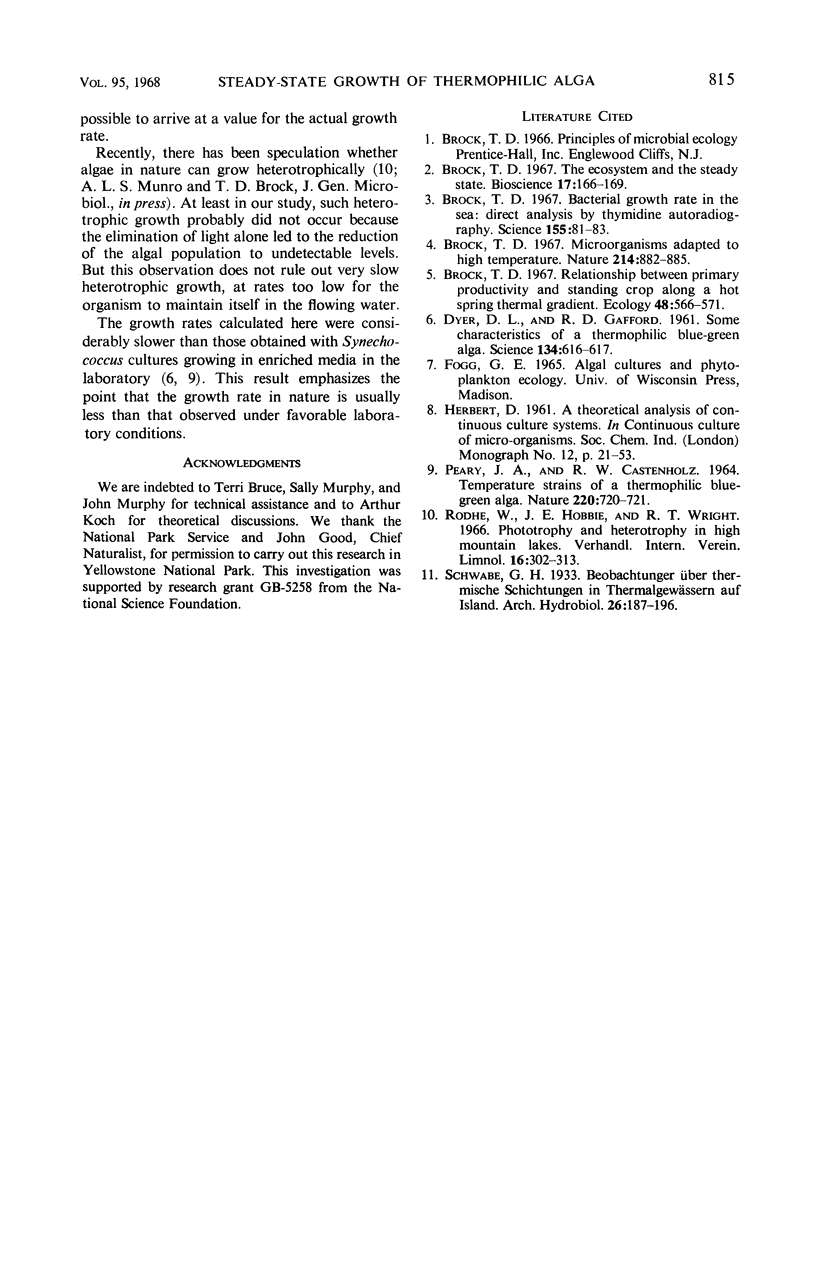
Images in this article
Selected References
These references are in PubMed. This may not be the complete list of references from this article.
- Brock T. D. Bacterial growth rate in the sea: direct analysis by thymidine autoradiography. Science. 1967 Jan 6;155(3758):81–83. doi: 10.1126/science.155.3758.81. [DOI] [PubMed] [Google Scholar]
- Brock T. D. Micro-organisms adapted to high temperatures. Nature. 1967 May 27;214(5091):882–885. doi: 10.1038/214882a0. [DOI] [PubMed] [Google Scholar]
- DYER D. L., GAFFORD R. D. Some characteristics of a thermophilic blue-green alga. Science. 1961 Sep 1;134(3479):616–617. doi: 10.1126/science.134.3479.616. [DOI] [PubMed] [Google Scholar]




